HarvestPlus wheat varieties fight zinc and iron deficiency in India
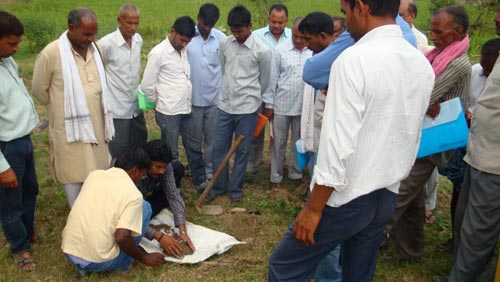 A series of farmer-scientist interaction meetings to create awareness of HarvestPlus and new biofortified wheat varieties with high zinc and iron content, involve farmers in participatory varietal selection (PVS) of biofortified varieties in the next crop cycle, train farmers on soil sampling for iron and zinc analysis, and discuss seed and wheat production technology, took place in eastern Uttar Pradesh, India, in November 2012. The meetings were held in Bhurkura, Mirzapur district, on 4 November, Sota, Chandouli district, on 10 November, and Pidkhir, Mirzapur district, on 18 November, and were attended by 25, 38, and 30 farmers, respectively. They were jointly organized by the Banaras Hindu University, Mahamana Krishak Samiti farmers’ cooperative, Mirzapur district, and CIMMYT, and supported by a private seed company M/s. Shyam Seed.
A series of farmer-scientist interaction meetings to create awareness of HarvestPlus and new biofortified wheat varieties with high zinc and iron content, involve farmers in participatory varietal selection (PVS) of biofortified varieties in the next crop cycle, train farmers on soil sampling for iron and zinc analysis, and discuss seed and wheat production technology, took place in eastern Uttar Pradesh, India, in November 2012. The meetings were held in Bhurkura, Mirzapur district, on 4 November, Sota, Chandouli district, on 10 November, and Pidkhir, Mirzapur district, on 18 November, and were attended by 25, 38, and 30 farmers, respectively. They were jointly organized by the Banaras Hindu University, Mahamana Krishak Samiti farmers’ cooperative, Mirzapur district, and CIMMYT, and supported by a private seed company M/s. Shyam Seed.
Balasubramaniam Arun, Ramesh Chand, and Vinod Kumar Mishra, wheat scientists from the Banaras Hindu University, introduced the HarvestPlus project’s objectives and the importance of biofortified wheat varieties. Chandra Prakash Srivastava explained the role of zinc and iron for human health, while soil scientist Satish Kumar Singh focused on their role and importance in crop production, as well as zinc level distribution in different soil types in the ricewheat growing areas of the region. Each meeting included a hands-on training on HarvestPlus trials sowing, during which farmers learned about experimental design with focus on plot area, number of lines, and amount of seed to be sown, and which included soil samples collection demonstrations. This was followed by a discussion on the use of conventional and zero-till drill for experiment planting, and the farmers’ experience with biofortified varieties, seed purity maintenance, and the use of the progeny row method. Balanced use of nitrogen, phosphorus, potassium, zinc, sulfur, and boron based on soil analysis was also covered.
CIMMYT wheat breeder Arun Joshi described the steps involved in quality seed production and the importance of seed producers’ organizations for small-scale farmers. He also highlighted advantages of the PVS approach, including the increased adoption rate of new varieties within a shorter period of time. Joshi appreciated the keen interest and active participation of farmers in PVS programs and encouraged them to continue their work and facilitate varietal selection to identify and promote agronomically superior biofortified varieties. The participating farmers showed their interest in HarvestPlus experiments and their continuing support for the wheat biofortification program. They expressed their full satisfaction with the interaction meetings, as these help them to build confidence and enhance their knowledge and capacity for understanding new wheat research processes and results. According to the participants, smallholder farmers have achieved significant gains through the participatory research program, an easier access to new varieties being one of them. Sri Hari Kirtan Singh of M/s. Shyam Seed agreed to multiply all lead varieties seeds identified for high zinc and iron content to allow easy access to an even larger number of farmers.
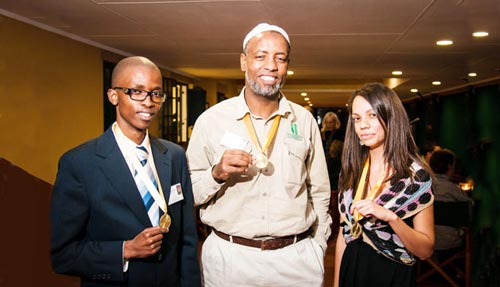
 The Kenya Annual Review and Planning Meeting (ARPM) was held during 5-6 November 2012 at the Kenya Agricultural Research Institute (
The Kenya Annual Review and Planning Meeting (ARPM) was held during 5-6 November 2012 at the Kenya Agricultural Research Institute (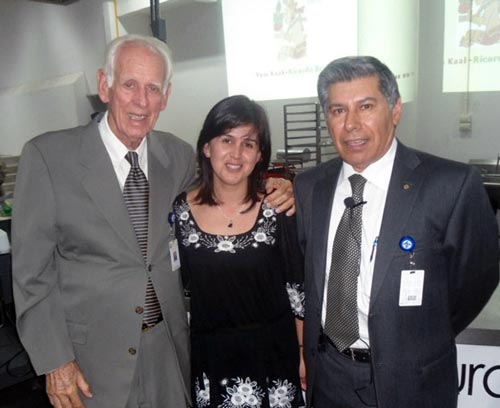
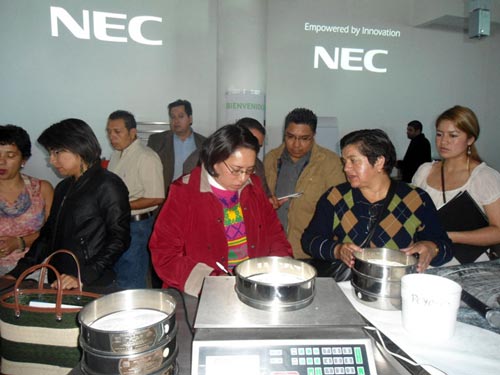 While the Congress was based largely on lectures, it provided a great opportunity for students to learn more about nixtamalization from the practical perspective, and an excellent opportunity for industry representatives to create a basis for future developments in the field. Our thanks go to all the staff involved in the Congress organization.
While the Congress was based largely on lectures, it provided a great opportunity for students to learn more about nixtamalization from the practical perspective, and an excellent opportunity for industry representatives to create a basis for future developments in the field. Our thanks go to all the staff involved in the Congress organization.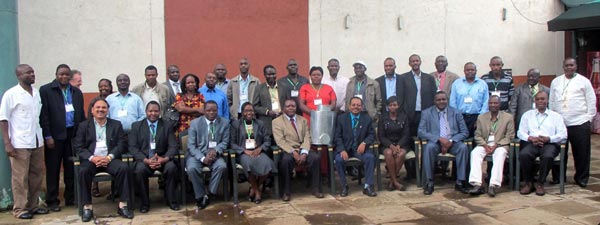
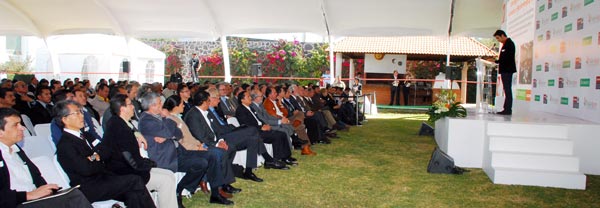
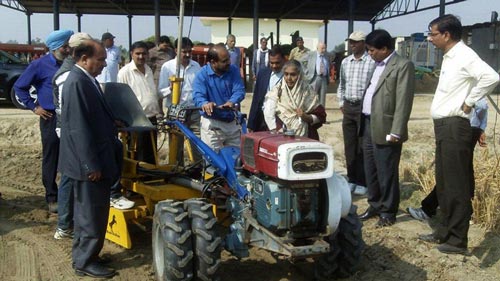 A delegation from the Government of Bangladesh led by Begum Matia Chowdhury, Minister of Agriculture, and accompanied by Tariq A Karim, High Commissioner of Bangladesh in India, Md Abdul Hamid, Additional Secretary of Agriculture, and Wais Kabir, Executive Chairman of the Bangladesh Agricultural Research Council (
A delegation from the Government of Bangladesh led by Begum Matia Chowdhury, Minister of Agriculture, and accompanied by Tariq A Karim, High Commissioner of Bangladesh in India, Md Abdul Hamid, Additional Secretary of Agriculture, and Wais Kabir, Executive Chairman of the Bangladesh Agricultural Research Council (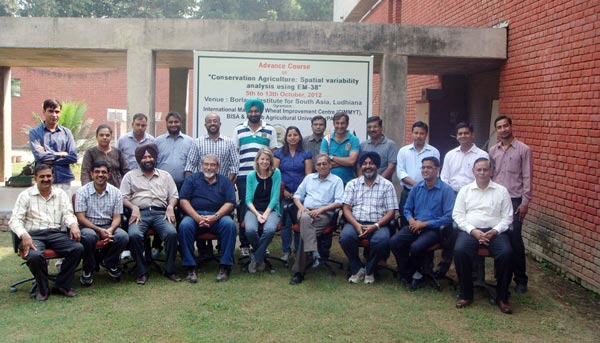
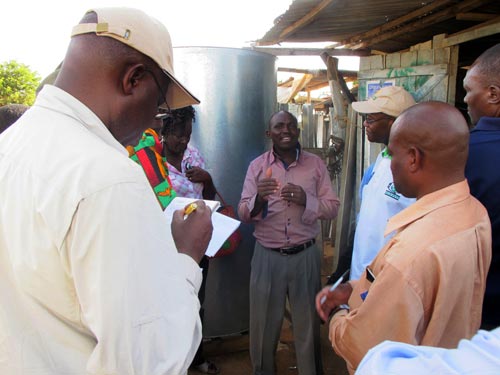 A delegation from Kenya, Malawi, Zimbabwe, and Zambia — the target countries of the Effective Grain Storage for Sustainable Livelihoods of African Farmers (EGSP) Phase-II Project— visited Malawi during 22-23 October and Kenya during 25-26 October 2012 to share experiences with project implementation and to learn about the project’s impact on the livelihoods of smallholder farmers. The delegation comprised of officials from ministries of agriculture and national agricultural research systems from the four EGSP countries, and implementing partners (Kenya Agricultural Research Institute and the Catholic Dioceses of Embu and Homa Bay in Kenya,
A delegation from Kenya, Malawi, Zimbabwe, and Zambia — the target countries of the Effective Grain Storage for Sustainable Livelihoods of African Farmers (EGSP) Phase-II Project— visited Malawi during 22-23 October and Kenya during 25-26 October 2012 to share experiences with project implementation and to learn about the project’s impact on the livelihoods of smallholder farmers. The delegation comprised of officials from ministries of agriculture and national agricultural research systems from the four EGSP countries, and implementing partners (Kenya Agricultural Research Institute and the Catholic Dioceses of Embu and Homa Bay in Kenya, 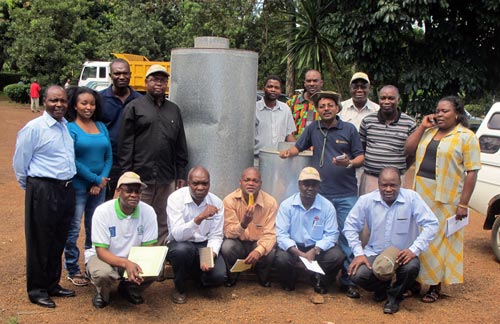
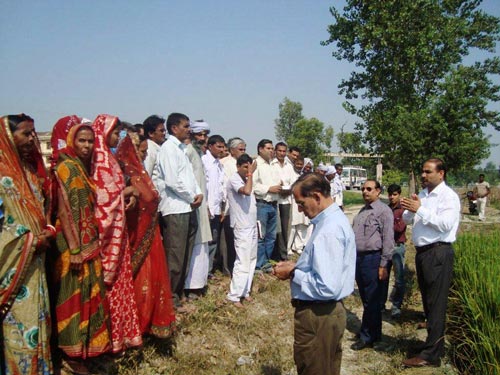 Under the aegis of Climate Change, Agriculture and Food Security (CCAFS), CIMMYT, Rajendra Agricultural University (
Under the aegis of Climate Change, Agriculture and Food Security (CCAFS), CIMMYT, Rajendra Agricultural University (
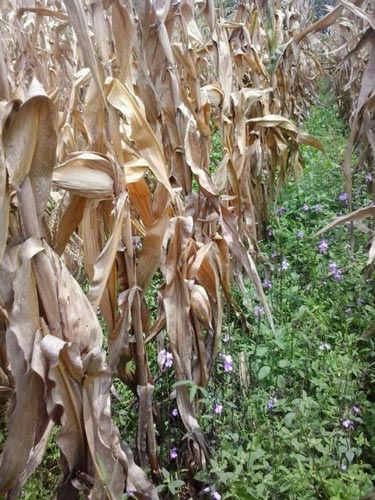
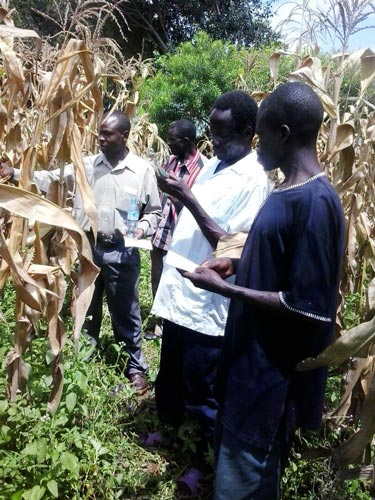 The field day was attended by James Ogwang, director of National Crops Resources Research Institute (NaCRRI) at Namulonge; Godfrey Asea, maize breeder and head of the Cereals Program; Pearl and NASECO seed companies representatives; Sammy Waruingi from BASF; and CIMMYT maize breeder Dan Makumbi and research assistant Edna Mageto. Ogwang urged the farmers to plant only certified seed and move beyond border issues to work together in Striga management. Asea thanked the government and farmers for their support in the fight against Striga. He said the farmers had become good project ambassadors.
The field day was attended by James Ogwang, director of National Crops Resources Research Institute (NaCRRI) at Namulonge; Godfrey Asea, maize breeder and head of the Cereals Program; Pearl and NASECO seed companies representatives; Sammy Waruingi from BASF; and CIMMYT maize breeder Dan Makumbi and research assistant Edna Mageto. Ogwang urged the farmers to plant only certified seed and move beyond border issues to work together in Striga management. Asea thanked the government and farmers for their support in the fight against Striga. He said the farmers had become good project ambassadors.